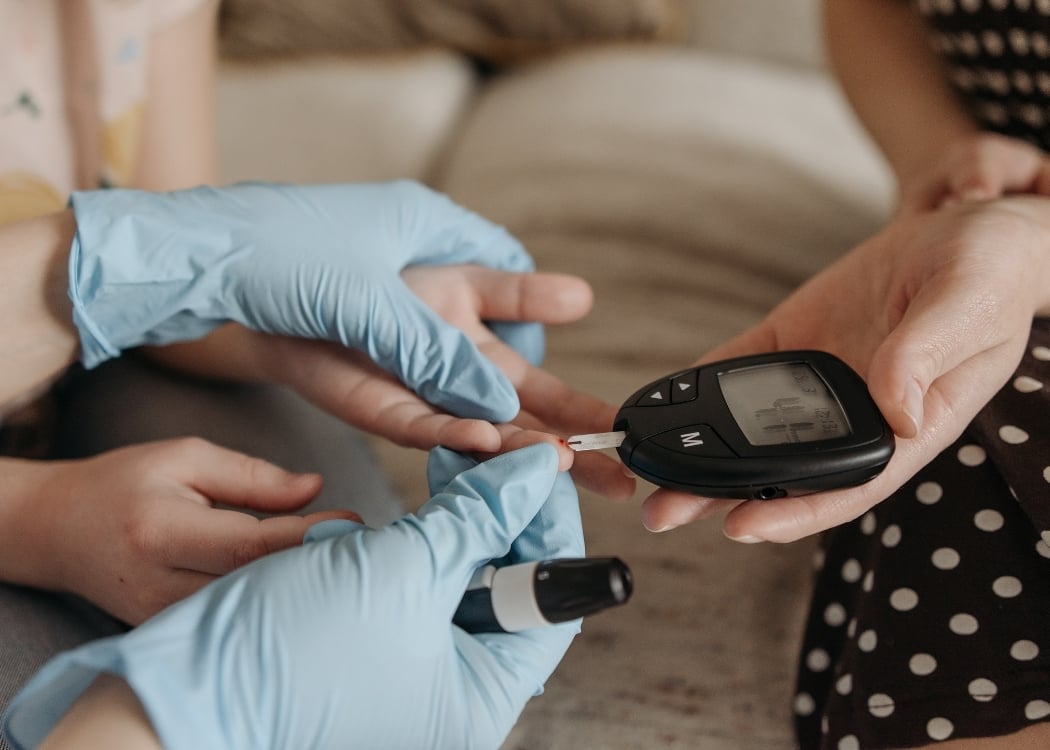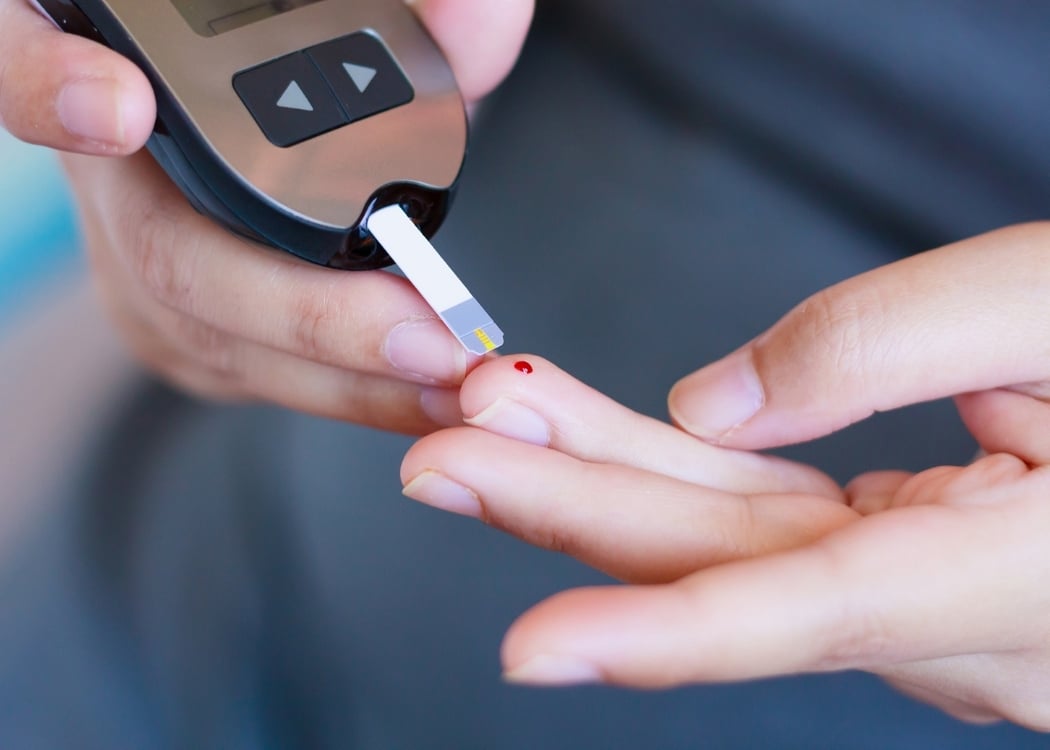Endocrinology and Diabetes Care
Endocrinology and Diabetes Care in Istanbul offers clear plans and steady follow up. Specialists manage type 1 and type 2 diabetes as well as thyroid, PCOS, adrenal, and pituitary conditions. You get same day labs, CGM and insulin pump setup, nutrition coaching, English speaking support, and transparent prices.

This article explains how endocrinology and diabetes care are organized for visitors who want clear plans, safe timelines, and predictable follow up. You will see how specialists evaluate hormones and metabolism, which treatments are common, how teams keep you safe, and how to plan days on the ground without stress. The language is simple and the steps are realistic, so you can read once and act with confidence.
What endocrinology covers
Endocrinology is the study of hormones and metabolism and how they affect energy, mood, growth, bone strength, sexual health, fertility, and blood pressure. Typical concerns include diabetes, thyroid disorders, parathyroid disease, adrenal and pituitary problems, osteoporosis, lipid disorders, obesity and weight management, and conditions such as polycystic ovary syndrome. Many patients arrive with a single question and then discover that a joined up plan improves several symptoms at once. This is the strength of a specialty that sees the whole picture rather than one organ at a time.
How a visit is organized
Your first visit begins with a detailed story about symptoms, daily routines, sleep, family history, and medicines. A physical examination follows and then targeted tests. The aim is not to order everything. The aim is to order the few tests that change decisions. A blood panel might include glucose, A1C, kidney and liver function, thyroid function, lipids, vitamin D, and markers tailored to your case. Imaging may include thyroid ultrasound, adrenal or pituitary scans, bone density studies, or vascular tests for diabetes complications. Results are explained in plain words with a written plan you can carry home.

Diabetes care in clear steps
Types and first principles
Diabetes is not one thing. Type 1 is an autoimmune process that removes the pancreas ability to make insulin. It requires insulin from the outside and benefits from continuous glucose monitoring and education that builds confidence. Type 2 is a mix of insulin resistance and a relative insulin shortage. It benefits from nutrition support, activity plans, and medicines that protect the heart and kidneys while improving glucose. Gestational diabetes appears during pregnancy and needs close attention to protect parent and baby. Your team will confirm the type using history, labs, and sometimes antibodies and C peptide. A correct label is the first piece of safety.
Targets that respect real life
Targets are individualized. The usual A1C goal is set to reduce long term complications without causing frequent or severe lows. Time in range from a continuous glucose monitor provides a richer picture than a single average. Targets for blood pressure and lipids are set to match age, kidney status, and heart risk. You should leave with numbers that make sense for you and a simple way to track progress. When targets are personal and realistic, people follow plans and feel better sooner.
Tools that make daily care easier
Modern diabetes care uses devices that reduce guesswork. Continuous glucose monitors show trends and alarms that help prevent lows. Smart pens and pumps record doses and timing so your team can coach you with data rather than memory. Insulin pumps and hybrid closed loop systems can adjust basal rates automatically within a safe range, which lowers the effort of keeping steady numbers. If you prefer simple steps, long acting insulin and meal time insulin still work very well when paired with a structured education session and a clear meal plan. Your choice should fit your life, not the other way around.

Medicines that do more than lower sugar
Therapy choices depend on benefits beyond glucose. For many adults with type 2 diabetes, first line plans include nutrition, activity, and a medicine that is kind to the heart and kidneys. In the right patients, sodium glucose cotransporter inhibitors reduce the risk of hospitalization for heart failure and help protect kidney function. Glucagon like peptide receptor medicines can reduce weight and improve cardiovascular outcomes in selected adults. Metformin remains useful, especially early, and is often combined with newer agents when risk is higher. If insulin is needed, it is introduced with respect and with teaching that removes fear. The plan is stepwise and steady, not rushed.
Complication screening without drama
Complications are not a surprise visit. They are screened on a schedule so you can act early. Eyes are checked regularly to catch retinopathy before vision suffers. Kidneys are protected through yearly albumin checks and careful blood pressure control. Feet are examined for sensation and skin integrity and shoes are discussed as equipment rather than fashion. Nerves and sexual health are discussed openly because they matter to life quality. Vaccinations for influenza, pneumonia, hepatitis, and others are reviewed because infections are harder on people with diabetes. When screening is routine, problems are smaller and solutions are simpler.
Food, movement, sleep, and stress
Daily habits are medicine. Food plans focus on protein, vegetables, fiber, and smart portions rather than strict rules that burn out within weeks. Movement can be built with a short walk after meals and two brief resistance sessions each week. Sleep quality improves glucose and appetite control and is checked as part of care. Stress raises glucose and blood pressure, and simple breathing or brief quiet time can move both in a better direction. You do not need perfection. You need small steps you can keep for months.

Travel with diabetes made simple
Travel adds a time zone puzzle but it does not need to be difficult. Carry medicines and devices in a cabin bag with a letter from your doctor. Pack double supplies of sensors, strips, and pens. Set alarms for time zone changes and ask your team for a simple insulin schedule that bridges the first twenty four hours if you use basal insulin. Keep a small snack and fast acting glucose in your pocket. For airport screening, show the device card and ask for manual inspection when scanners are not compatible with your equipment. These small steps make travel calmer and keep your numbers steady.
Beyond diabetes in everyday endocrinology
Thyroid problems that are common and manageable
Thyroid disorders are frequent and most are straightforward to diagnose and treat. An underactive gland causes fatigue, cold intolerance, weight gain, and low mood. A simple blood test confirms the diagnosis and replacement therapy returns energy and clarity with periodic dose checks. An overactive gland causes palpitations, heat intolerance, weight loss, and anxiety. Treatment can include medicines, a targeted iodine therapy, or surgery when indicated. Thyroid nodules are very common and most are benign. Ultrasound features guide whether a fine needle sample is needed. Decisions are paced and conservative when safe because the body values balance over speed.
Parathyroid and calcium balance
Parathyroid glands regulate calcium. Overactivity leads to high calcium, kidney stones, and bone loss. The workup confirms the pattern and the location of the overactive gland. When surgery is advised, minimally invasive techniques can cure the problem with a short stay and a fast return to normal life. People often describe better energy and clearer thinking once levels are corrected. Calcium and vitamin D are reviewed with care so bones feel the benefit.

Adrenal and pituitary conditions
Adrenal and pituitary glands act as command centers for stress response, blood pressure, salt balance, growth, reproduction, and thyroid function. Too much or too little hormone creates a wide range of symptoms. Evaluation is careful and stepwise. Blood and urine tests are timed to the body clock. Imaging is used only when a biochemical signal says it matters. Treatment can be medicine, focused surgery, or observation with scheduled checks. The rule is simple. Treat when benefit clearly exceeds risk and explain each step before you proceed.
Bone health and fracture prevention
Osteoporosis prevention begins long before a fracture. Bone density testing identifies low bone mass so that nutrition, vitamin D, strength work, and medicines can reduce risk. For people who have already fractured, therapy is stronger and watches for gains in density over the first two years. The plan is shared in writing and includes fall prevention, vision checks, and a brief medication review to identify drugs that raise risk. Protecting bones is slow work but it pays off for decades.
Weight management with care and science
Obesity is a chronic disease and deserves the same respect as any other. Plans mix nutrition support, activity, sleep, and medicines with proven outcomes for weight and cardiometabolic risk. For some people with severe obesity or with major complications, metabolic and bariatric surgery can improve weight, diabetes control, and long term survival when matched to the right candidate. Success comes from follow up rather than a single day. Vitamins are monitored, habits are reinforced, and primary care is included in the conversation so gains last.
Safety systems you can feel
Consent as a conversation
Consent is not a form. It is a talk about benefits and risks, alternatives and timing, and what happens if plans change. You should feel safe to ask questions, to bring a companion, and to sleep on a decision. Teams that invite questions provide better care because clear minds make better choices.

Medication safety and monitoring
New medicines are matched to your history to reduce side effects and drug interactions. Kidney and liver function set dose and frequency. If a drug may cause lows, you receive a prevention plan and a rescue plan in writing. If a drug affects fluid balance, you learn simple signs that prompt a call. Devices are taught hands on, with practice on a trainer and a follow up message the next day. The feeling you are aiming for is quiet confidence.
Pregnancy planning and endocrine care
Fertility and pregnancy require special timing. Diabetes control is tightened before conception to protect the baby and prevent complications. Thyroid levels are checked because normal function supports healthy development. Adrenal and pituitary conditions are reviewed in advance so doses can be adjusted safely. A written plan makes clinic days shorter and travel days calmer.
How many days to plan and how to pace them
Two to three days for a strong baseline
A focused workup can fit into a short visit. Day one covers story, exam, core labs, and a device education session if you wish to start a monitor. Day two brings results, ultrasound or bone density if needed, and a detailed plan. Day three is a buffer for a second consult, nutrition coaching, or a device start. People who arrive with recent records can move even faster because duplication is avoided.

Longer stays for complex endocrine surgery or diabetes technology starts
Some plans deserve more days. Thyroid or parathyroid surgery may require a week from consult to discharge to final check. Pump starts may need several days to tune settings, especially when paired with a continuous glucose sensor. Adrenal or pituitary cases can require more imaging and more hormone testing, which is paced across the week so samples are timed correctly. Each timeline is written and you always know what tomorrow brings.
Life between appointments
Food, rest, and gentle movement
Choose kind routines. Breakfast with protein and fiber. A short walk after meals. A light lunch with vegetables and healthy fats. Hydration that keeps energy steady. A quiet hour in the late afternoon. An early bedtime when your body asks for it. If you use a glucose monitor, review your day with your coordinator so small adjustments keep you in range without strain.
Records to carry home
Documentation protects continuity. Take a discharge letter, updated prescriptions, device settings, and copies of key labs and images. Save files in your phone and on cloud storage. Share them with your local doctor so follow up is smooth. If your plan includes new devices or medicines, agree on a tele visit date and a message channel that your team checks every day.
Costs and insurance
Clear numbers reduce stress
Ask for itemized quotes that list consults, tests, imaging, devices, medicines, and follow ups. Many visitors pay by card and claim later with invoices and medical reports. If your insurer can guarantee payment to a major hospital, coordinators can help with documents. Keep all receipts and reports. Good records save time and protect your budget.
Choosing a center and a team
Match skills to needs
Pick a specialist who manages your condition every week. Ask for a named endocrinologist or diabetologist and for a written plan. Confirm that nutrition, diabetes education, and device support are available on site or through a coordinated partner. If surgery is on the table, ask for the surgeon name and annual case volume for your procedure. Calm answers are a good sign. The right choice feels steady from the first message.

Closing perspective
Hormone and metabolic health improve when plans are simple and consistent. A few well chosen tests, a tailored mix of medicines and devices, honest targets, and support for food, movement, sleep, and stress can change how you feel within weeks. With a clear plan and a team that follows through, endocrinology and diabetes care become part of life rather than an interruption to it. That is the path to steady numbers, stronger bones, better energy, and more confident days.
References
- American Diabetes Association. Standards of Care in Diabetes 2025. Comprehensive guidance on diagnosis, glycemic targets, technology, cardiovascular risk reduction, kidney protection, and obesity management.
- American Association of Clinical Endocrinology. AACE Comprehensive Type 2 Diabetes Management Algorithm 2023 with updates through 2025. Practical medication sequencing and risk based targets.
- European Association for the Study of Diabetes and ADA. Consensus Report on the Management of Hyperglycemia in Type 2 Diabetes 2023. International alignment on glucose lowering and organ protection.
- Kidney Disease Improving Global Outcomes. KDIGO Clinical Practice Guideline for Diabetes Management in Chronic Kidney Disease 2022 with practice points updates. Use of SGLT2 inhibitors and renin angiotensin blockade.
- Endocrine Society. Clinical Practice Guideline on Continuous Glucose Monitoring and Automated Insulin Delivery 2023. Device selection and time in range targets.
- Endocrine Society. Management of Thyroid Disease guideline suite including hypothyroidism and hyperthyroidism updates. Diagnostic pathways and treatment choices.
- American Thyroid Association. Guidelines for Adult Patients with Thyroid Nodules and Differentiated Thyroid Cancer. Ultrasound risk patterns and biopsy criteria.
- International PCOS Network. International Evidence Based Guideline for the Assessment and Management of Polycystic Ovary Syndrome 2018 with updates. Lifestyle, metabolic, and fertility guidance.
- Endocrine Society. Clinical Practice Guideline on Osteoporosis in Postmenopausal Women 2019 with updates. Pharmacologic therapy, calcium, vitamin D, and fracture prevention.
- National Osteoporosis Foundation. Clinician’s Guide to Prevention and Treatment of Osteoporosis 2022. Risk stratification and treatment thresholds.
- European Society of Cardiology. Cardiovascular Disease Prevention Guidelines 2021 and updates. Lipid and blood pressure targets for people with diabetes.
- International Diabetes Federation. IDF Diabetes Atlas Tenth Edition 2024. Global burden, trends, and screening priorities.
- American Association of Clinical Endocrinology. Clinical Practice Guidelines for the Perioperative Management of Endocrine Disorders. Surgical timing and hormone optimization.
- American Association of Endocrine Surgeons. Guidelines for Definitive Management of Primary Hyperparathyroidism. Indications and outcomes for focused parathyroid surgery.
- American Association of Clinical Endocrinology and American College of Endocrinology. Comprehensive Clinical Practice Guidelines for Medical Care of Patients with Obesity 2022. Pharmacotherapy and long term care.
- American Society for Metabolic and Bariatric Surgery. Perioperative and Long Term Management Guidelines 2022. Indications, safety, and follow up after surgery.
- American Academy of Ophthalmology. Preferred Practice Pattern on Diabetic Retinopathy 2024. Screening intervals and treatment thresholds.
- Centers for Disease Control and Prevention. Diabetes and Travel resources. Practical guidance on supplies, devices, and illness management during trips.
- American College of Cardiology and American Heart Association. Guideline on Cardiovascular Risk Reduction in Patients With Type 2 Diabetes. Statins, blood pressure control, and antiplatelet therapy in selected patients.
- Society for Endocrinology and the Pituitary Society. Clinical Guidance on Pituitary Disorders 2021 with updates. Evaluation and treatment for adenomas and hormone deficiencies.



